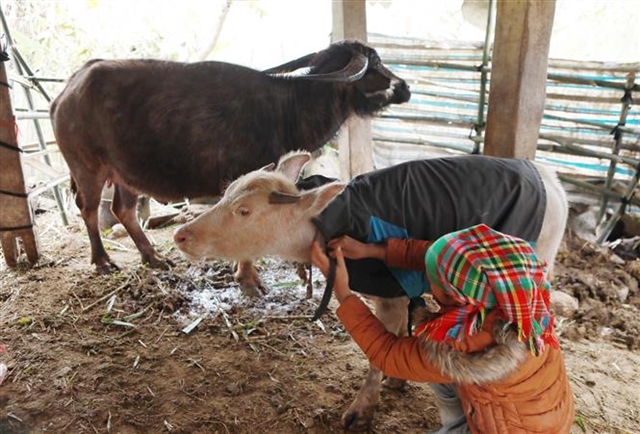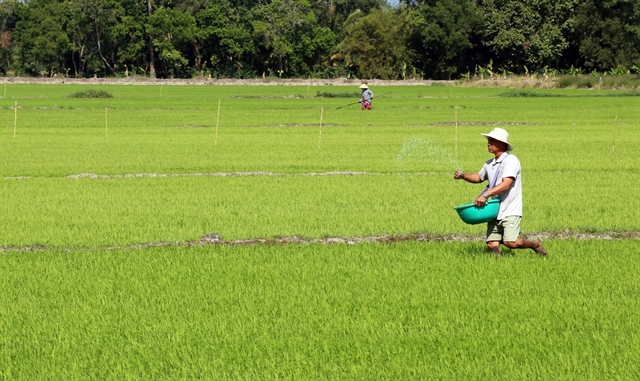 Society
Society

Farmers in the Cửu Long (Mekong) Delta province of Kiên Giang are co-operating with companies to produce more than 35,000ha of rice under large-field models to secure outlets and improve profits.

|
| Farmers in Kiên Giang Province’s Gò Quao District tend the 2019-20 winter-spring rice. — VNA/VNS Photo Lê Huy Hải |
KIÊN GIANG — Farmers in the Cửu Long (Mekong) Delta province of Kiên Giang are co-operating with companies to produce more than 35,000ha of rice under large-field models to secure outlets and improve profits.
Kiên Giang, the country’s largest rice producer, is developing large rice fields in many localities, including Giang Thành, Kiên Lương, Hòn Đất, Tân Hiệp, Châu Thành, Gò Quao and Giồng Riềng districts.
The fields are owned by one or more farmers but apply the same farming techniques to produce rice with similar and stable quality.
Đỗ Minh Nhựt, deputy director of the province’s Department of Agriculture and Rural Development, said farmers in agricultural co-operatives would work with companies to produce rice under the large-field model.
“The companies invest in agricultural inputs and give instructions in farming techniques to produce high quality rice for exports. The companies also guarantee outlets with a reasonable floor price, ensuring benefits for both parties.”
Under the co-operation, farmers apply the “one must and five reductions” method in which farmers use certified seeds and reduce seeding, plant protection chemicals, nitrogen fertilisers, irrigation and post-harvest losses.
Farmers working with companies in the 2019-20 winter-spring rice crop under large-field models are expected to have a good harvest since rice plants are developing well, according to farmers.
Đặng Văn Rang, acting director of the Tân Hòa A Co-operative in Tân Hiệp District’s Tân Hiệp B Commune, said the co-operative’s farmers have contracted with Lộc Trời Group to cultivate more than 90ha of the 2019-20 winter-spring rice under large-field model.
Lộc Trời will buy paddy from farmers at a floor rice of VNĐ5,000 a kilogramme if the market price of paddy is lower than the floor price at the harvest time, he said.
If the market price of paddy is higher than VNĐ5,000 a kilogramme at the harvest time, Lộc Trời will buy paddy at the market price, he said.
In addition, participating farmers who strictly follow farming techniques provided by Lộc Trời and produce high quality paddy will be paid an additional 200 đồng a kilogramme, he said.
In Tân Hiệp District, authorities have given farmers VNĐ4,000 for each kilogramme of rice seed that they use for the 2019-20 winter-spring rice under large-field models.
Phan Kim Loan, head of the Tân Hiệp District Agriculture and Rural Development Bureau, said four companies have contracted with farmers in the district to grow rice on large fields in the 2019-20 winter-spring crop.
The district’s large rice fields with farm contracts have more than 3,000ha for the winter-spring crop, she said. In the previous rice crop, the area of rice fields with farm contracts in the district comprised only a few hundred hectares, she said.
The province’s farmers have sowed 289,000ha of rice in the winter-spring crop, meeting the target, according to the department. Of the figure, farmers have harvested more than 20,000ha with an average yield of six tonnes per hectare.
Last year, the province grew 722,000ha of rice with a total output of nearly 4.3 million tonnes of paddy, including 56 large rice fields with a combined area of more than 33,250ha.
About 72 per cent of the province’s rice farming areas grew high-quality rice last year. — VNS




